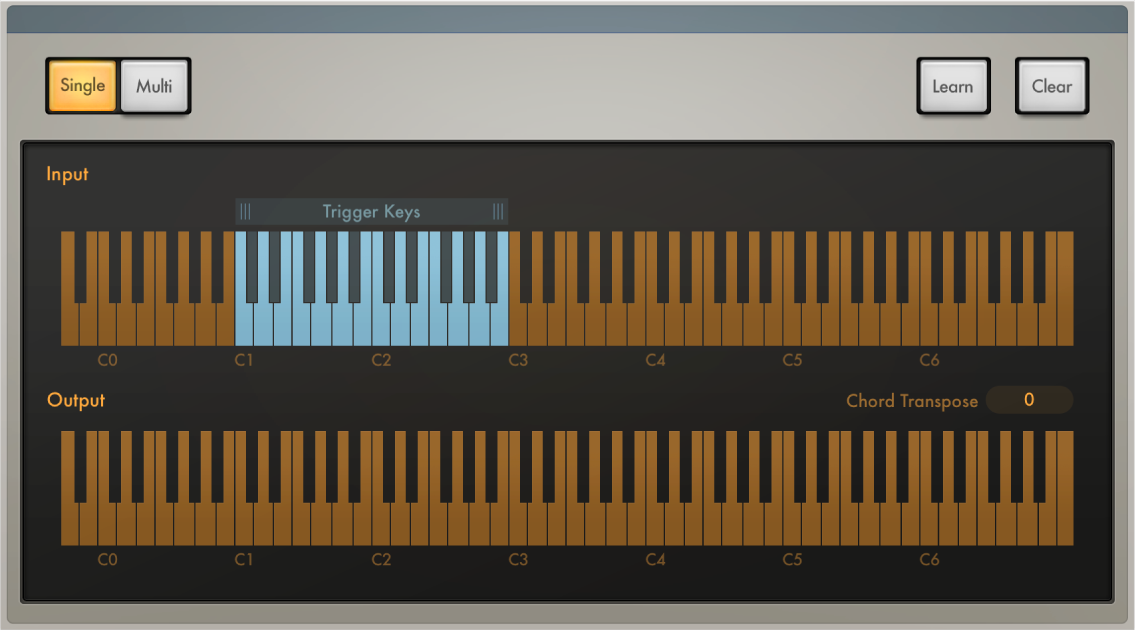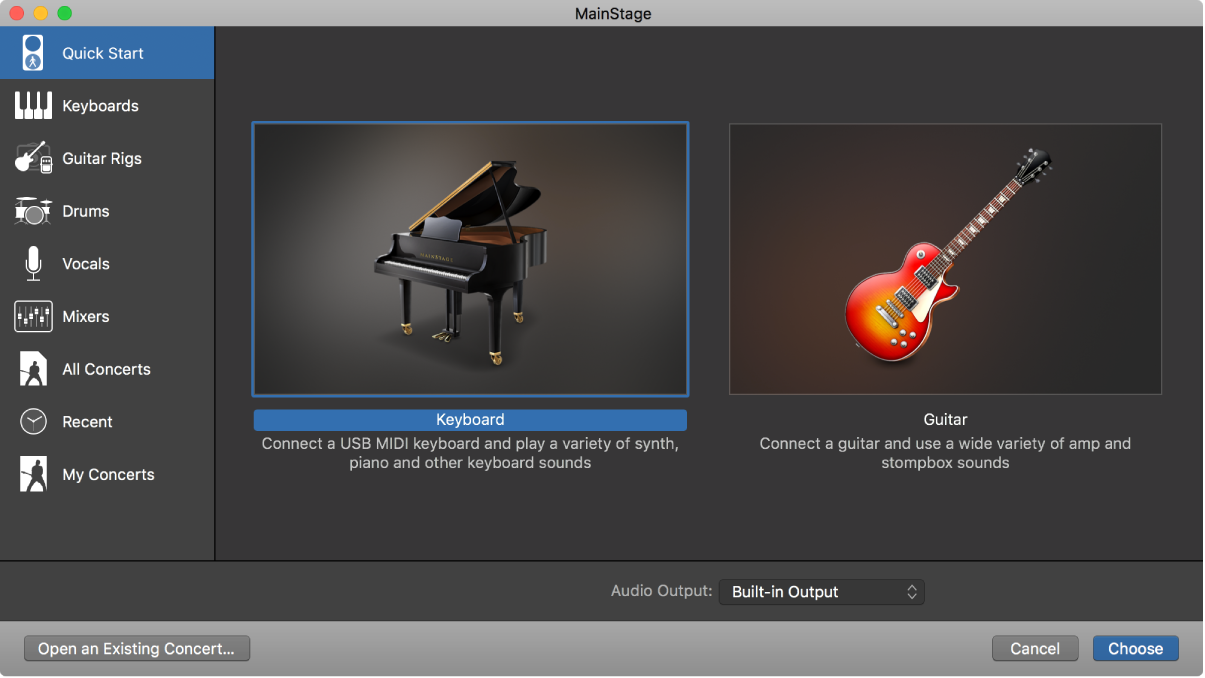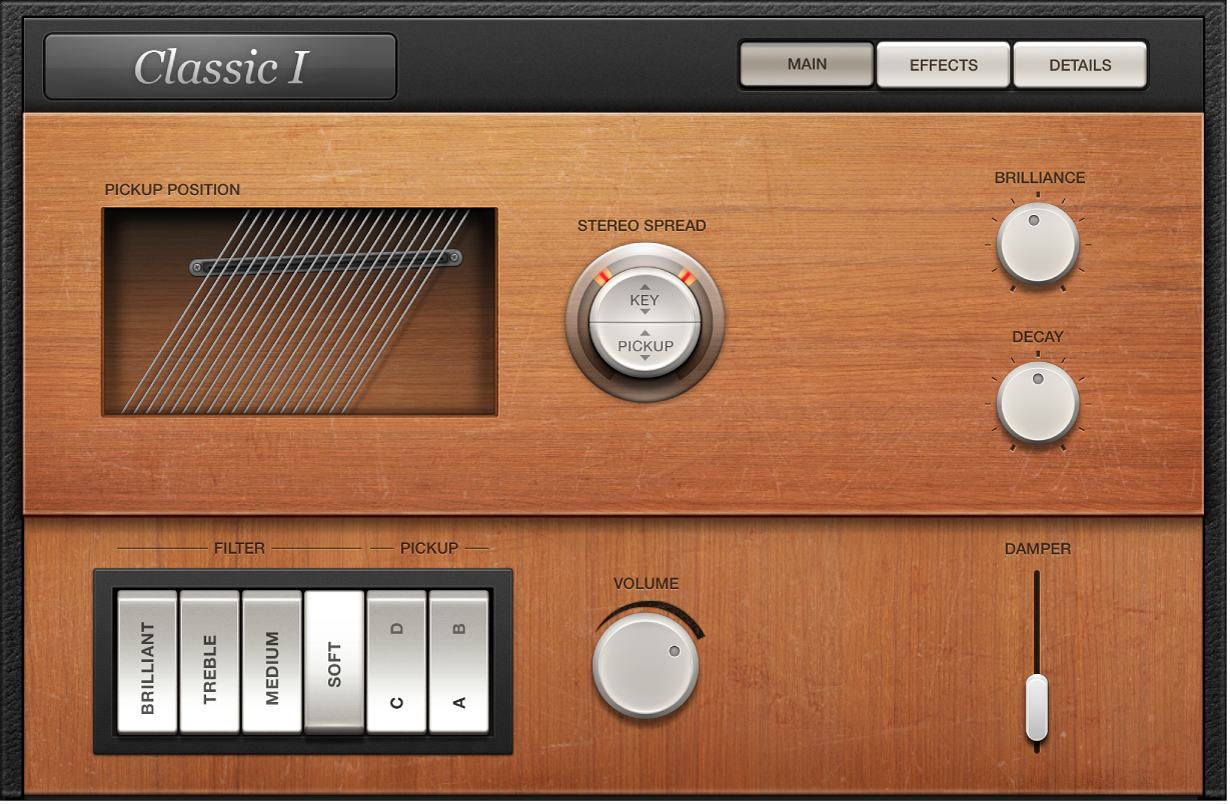

(This idiosyncratic gadget, actually a card which fitted inside an Apple 2 computer, was cutting-edge technology back then, but seems laughable now - its total RAM memory was 1.5 seconds of glorious eight-bit mono sampling.) I duly sampled Bowie's monster drum sounds from the original multitrack tape into the Greengate and saved them on five-inch floppy disks, half afraid that the Thin White Duke would burst though the door and demand to know what the hell I was playing at.
#Apple mainstage trigger drums plus#
The early '90s saw him moving to a more refined version using an Octapad II with drum sounds from an Akai S3000XL sampler, plus commercial drum triggers.The master tape was procured, and off I marched to a London studio for a sampling session, proudly clutching my cutting-edge, Hertfordshire-built Greengate DS3 sampler.


Gavin's original 'hi-tech' drum triggering setup used contact mics on snare and kick to send an audio trigger to a Roland Octapad, which in turn sent MIDI notes to a Greengate DS3 sampler. My mission was to play a real drum kit on stage with Iggy, while somehow also triggering those fabulous sounds from the record. A real kit could not produce those kinds of noises on stage, and to make matters worse, the drum sounds on the album were significantly different from track to track. David Bowie (Dr Jekyll to Iggy's Mr Hyde) was the producer, and, typical of its time, the album featured sampled drum sounds - big, explosive snares and heavily-treated, massive bass drums. My personal quest for the Holy Grail of immaculate sample triggering began in 1986, when I went on tour with Iggy Pop to promote his Blah Blah Blah album. At this stage, many musicians (myself included) began to look for an answer to the question 'how do you trigger samples from a drum kit on stage?' Hair Trigger Inevitably, gigging bands wanted to take advantage of this brave new sound world, but not all were prepared to replace their drummer with a drum machine (even though you only had to punch the rhythm into the latter once). But before long, producers began to abandon acoustic drum sounds altogether, and within the space of a few years, sampled drums and percussion ruled the earth. At first, samples were used to enhance 'real' sounds, and it became common to add a processed, ambient-sounding clap sample to a snare drum to 'big up' the backbeat. The sampling revolution transformed drum sounds even further. These new 'super-sounds' were the result of clever processing - one memorable example is the drum sound on Phil Collins' 'In The Air Tonight', created using a combination of heavily compressed room ambience and triggered noise gates.

Snare drums mutated from a quick bash into something more like a nuclear explosion, accompanied by bass drums recorded in the Taj Mahal and tom-tom fills resembling rapid cannon fire. When the epic, studio-created drum sounds of the '80s had to be translated to a stage setting, sample triggering from drum kits came to the fore - and our man Gavin Harrison began his personal quest for the ultimate setup.ĭuring the early 1980s, drum sounds on records began to change.


 0 kommentar(er)
0 kommentar(er)
